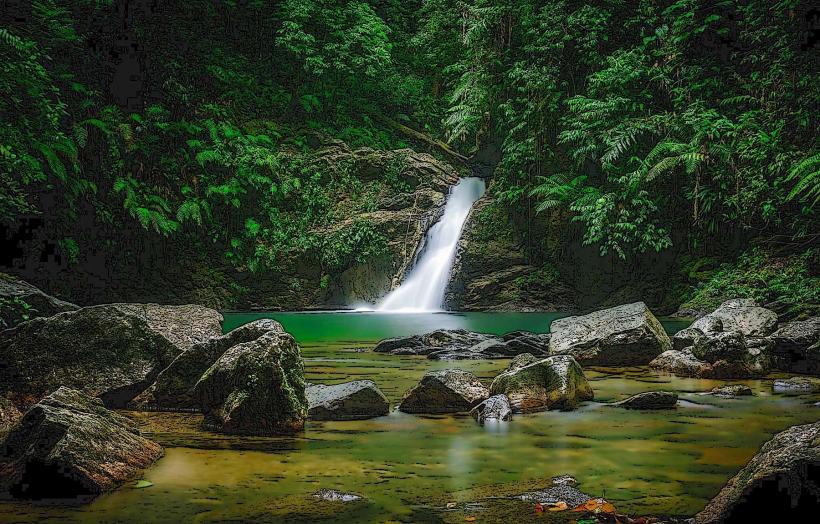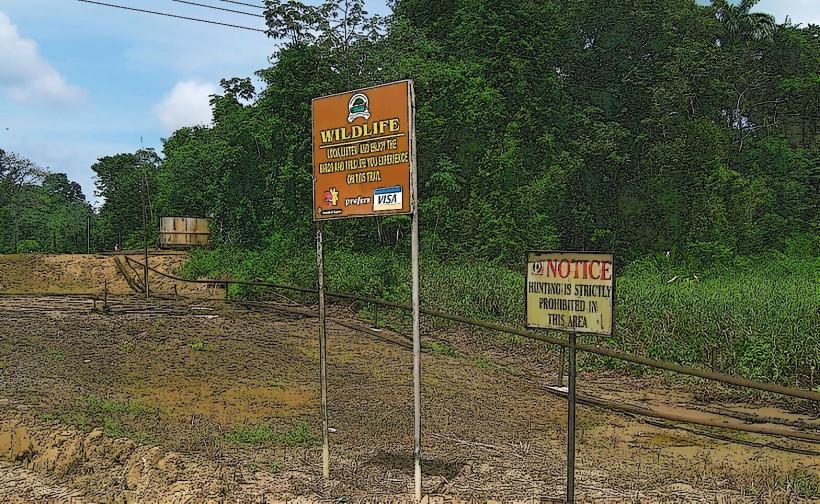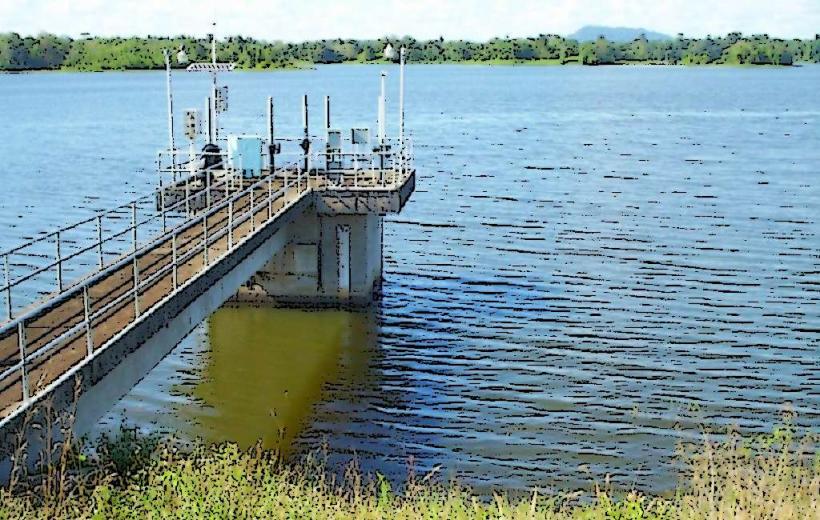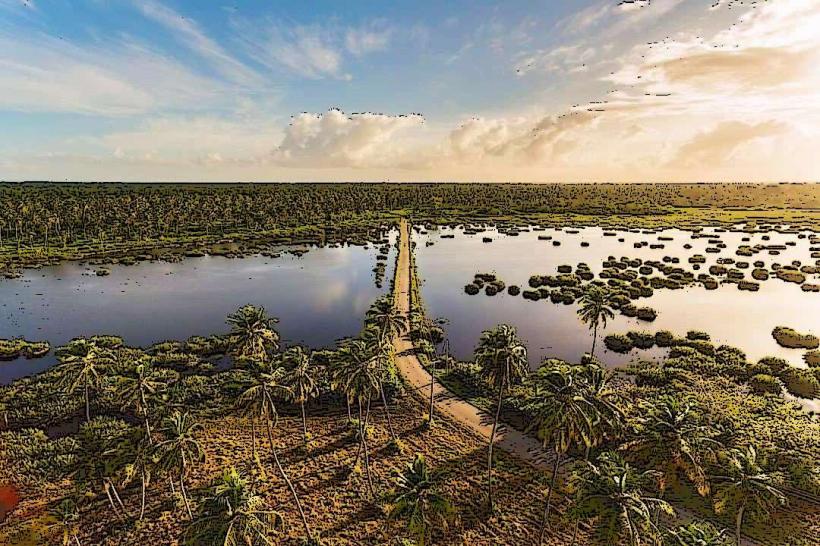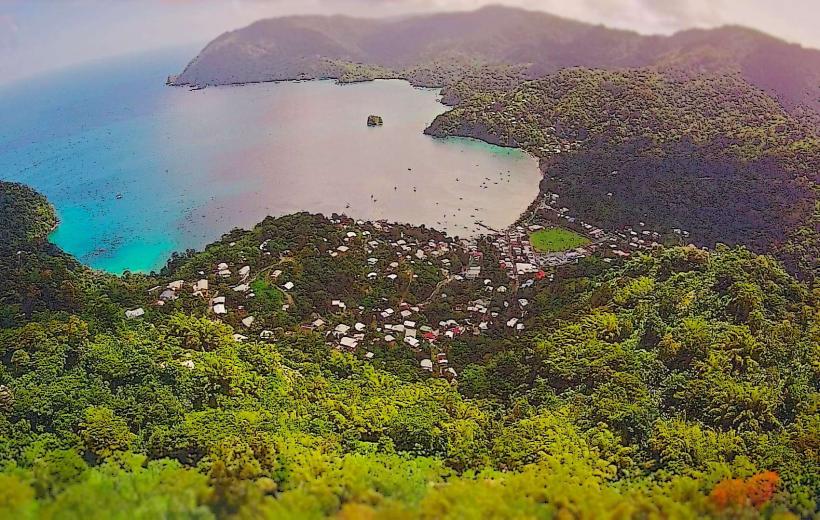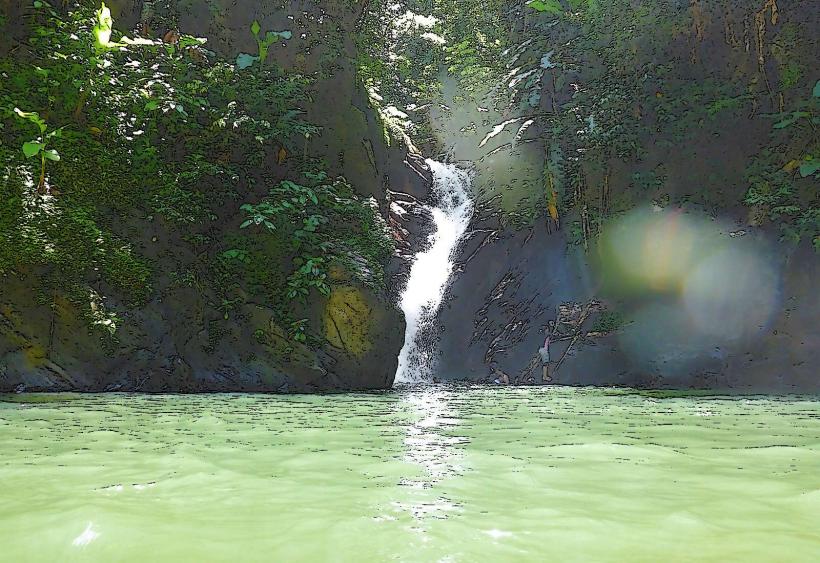Information
Landmark: Navet DamCity: Rio Claro
Country: Trinidad and Tobago
Continent: North America
Navet Dam is a reservoir located in the central region of Trinidad, near the town of Brasso Seco. It is one of the key sources of drinking water for the island and plays a critical role in water supply management for the local population, as well as in the broader hydrological system of Trinidad. The dam is known for its scenic surroundings, serving both as a vital water resource and a location for outdoor activities.
1. Geographic Location and Features:
- Location: Navet Dam is situated in the central part of Trinidad, more specifically in the Brasso Seco area of the Northern Range mountains. It is positioned to the north of Chaguanas, one of Trinidad's largest towns, and is accessible via the Brasso Seco Road.
- Size and Capacity: The dam is relatively large, with a capacity of approximately 45 million cubic meters of water. The reservoir spans an area of about 2.5 square kilometers and is surrounded by a lush rainforest and mountainous terrain, making it an important geographical feature of the region.
- Source of Water: Navet Dam is fed by the Navet River, which originates in the nearby mountains. The river flows into the reservoir, providing a reliable source of freshwater for the surrounding areas.
2. Ecological Importance:
- Water Supply: Navet Dam is a critical part of the island's water supply infrastructure. It provides water to nearby communities, including Chaguanas, and is connected to the Caroni River system. The dam contributes to meeting the drinking water needs of residents in central Trinidad and the broader western and southern areas of the island.
- Biodiversity: The dam and its surrounding environment, including the rainforests and wetlands, support a variety of plant and animal species. The area around the dam is home to different species of trees, mammals, reptiles, and birds, particularly those adapted to the tropical rainforest ecosystem.
- Fish Life: The dam is home to a variety of freshwater fish species. While the primary purpose of the dam is not for recreation or fishing, the water body does host some fish species, and local fishermen occasionally visit the area for small-scale fishing.
3. Human Activity and Use:
- Water Supply for Agriculture and Industry: Apart from domestic use, the water from Navet Dam is also used for irrigation in nearby agricultural areas. The fertile lands in the region benefit from the consistent water supply, particularly during dry periods. Some industries in the central region also rely on the dam's water for operational needs.
- Tourism and Recreation: While primarily a utility for water supply, Navet Dam and its surrounding environment attract visitors for nature tourism and recreation. The scenic beauty of the reservoir, set against the backdrop of lush mountains, offers opportunities for activities such as picnicking, birdwatching, and hiking. However, access to the dam is generally restricted, and visitors need to follow local regulations to ensure safety and environmental protection.
- Water Sports: In certain controlled areas of the dam, visitors and locals occasionally engage in canoeing and kayaking. These activities provide an opportunity to enjoy the natural surroundings from the water, though safety regulations are enforced to prevent accidents in the reservoir.
4. Environmental Challenges:
- Pollution: Like many water bodies, Navet Dam faces challenges from pollution, including runoff from surrounding agricultural lands, which may introduce pesticides and sediments into the water. Illegal dumping of waste in the surrounding areas can also affect the quality of the water in the dam.
- Invasive Species: The introduction of non-native species, both aquatic and terrestrial, poses a threat to the biodiversity of the reservoir and surrounding forest. These invasive species can outcompete native species, leading to imbalances in the ecosystem.
- Climate Change: Changes in rainfall patterns and the frequency of droughts can affect the water levels in the dam. Prolonged dry spells may reduce the reservoir's capacity, making it harder to meet water demand in the region.
5. Conservation and Management Efforts:
- Water Quality Monitoring: Efforts are made to monitor water quality regularly, with authorities working to control pollution and ensure that the dam continues to provide safe drinking water. Local agencies like the Water and Sewerage Authority (WASA) are involved in managing the quality and flow of water from the dam.
- Protected Area Status: The surrounding forest area and the watershed of Navet Dam may be subject to environmental protection regulations. This helps ensure the preservation of the natural environment, including the rainforests, wildlife habitats, and the overall integrity of the dam’s ecosystem.
- Invasive Species Management: Programs may be in place to control the spread of invasive species in and around the reservoir, maintaining a balanced ecosystem and protecting native species.
6. Nearby Attractions:
- Brasso Seco Village: Brasso Seco, a village located near the dam, offers a peaceful rural atmosphere. Visitors can explore the village and its surroundings, enjoying the natural beauty of the area and learning about local culture.
- Hiking and Nature Trails: The Northern Range mountains around the dam provide numerous hiking trails, including routes that lead to scenic viewpoints, waterfalls, and other natural attractions. Popular hikes in the region may include trips to places like the Palo Seco and Aripo areas, which offer a mix of rainforest and mountainous terrain.
- Caroni Bird Sanctuary: Located to the west of Navet Dam, the Caroni Bird Sanctuary is another area of ecological significance. It is a popular location for birdwatching, particularly for spotting the scarlet ibis, Trinidad and Tobago's national bird.
7. Best Time to Visit:
- Dry Season (December to May): The best time to visit the Navet Dam and surrounding areas is during the dry season, when the weather is more conducive to outdoor activities like hiking, sightseeing, and photography. This period also tends to offer clearer views of the reservoir and the surrounding mountains.
- Rainy Season (June to November): While the rainy season brings lush vegetation and vibrant landscapes, it can make trails slippery and difficult for hiking. Additionally, increased rainfall may cause the water levels of the dam to rise, potentially impacting access to the area.
8. Conclusion:
Navet Dam is a crucial piece of infrastructure in Trinidad, providing water for drinking, agriculture, and industry. It is nestled in the heart of central Trinidad, surrounded by a rich and diverse ecosystem that supports a variety of wildlife and plant species. While the dam plays a major role in ensuring water supply for the region, it also faces environmental challenges that require attention and management. For visitors, the area offers an opportunity to explore the natural beauty of Trinidad’s mountainous interior, with opportunities for hiking, nature walks, and relaxation in a tranquil setting.

